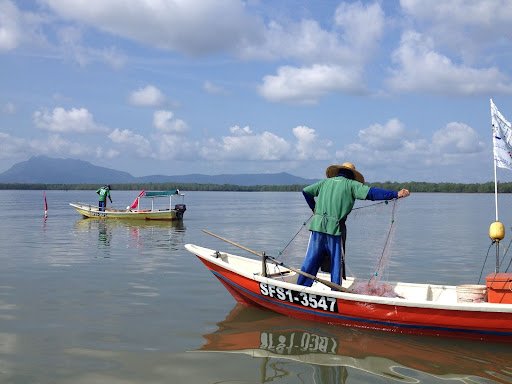August 2022 Science Corner | “Reaching Global Marine Biodiversity Conservation Goals With Area-Based Fisheries Management: A Typology-Based Evaluation”


As Blue Forest continues exploring new ecosystems and beneficiaries of conservation finance, it feels timely to feature research about Other Effective Area-Based Conservation Measures (OECMs).
Authors: Amber Himes-Cornell, Juan Francisco Lechuga Sánchez, Caroline Potter, Clayton McKean, Jake Rice, Kim J. Friedman, Serge M. Garcia, and Dave L. Fluharty
Story and photo by: Gregg Verutes, PhD, Head of Geospatial Science
As Blue Forest continues exploring new ecosystems and beneficiaries of conservation finance, it feels timely to feature research about Other Effective Area-Based Conservation Measures (OECMs). OECMs are a new opportunity, defined and adopted by the Parties to the Convention on Biological Diversity (CBD), for recognizing the efforts of sustainable use sectors, Indigenous Peoples, and local communities in conserving biodiversity.
Traditional conservation metrics can ignore or even disempower Indigenous and local communities by promoting eco-imperialism. This leads to improper management that does not consider the full suite of local values that enable people and nature to thrive. Simply put, an OECM is a different way for nations to meet global biodiversity targets without excluding communities and by facilitating collaboration across various sectors to benefit biodiversity.
Fisheries OECMs are complementary to Marine Protected Areas (MPAs), but their inclusion in the targets of the CBD represents a novel opportunity for biodiversity conservation. They intend to recognize the efforts of sustainable fisheries management and advance other conservation objectives, as described in a research paper published in the journal Frontiers in Marine Science this month.
By reviewing over 1000 publications, Dr. Amber Himes-Cornell and colleagues identified individual case studies that used some kind of spatial management tool or looked at biodiversity outcomes. They found that most studies are not just one type of intervention but a combination – e.g., fishing gear bans and closure areas – all working together.
Their work shows that we cannot simply perform one conservation action and assume it will meaningfully influence the landscape. To have a positive impact, there need to be multiple tools, treatments, or constraints placed on an area. Because the OECM concept aims to recognize rather than remove people from an MPA, there is conservation work that people can do in an area and still use its resources, with a net positive outcome for people and biodiversity.
OECMs typically have a primary objective based on how the land/seascape is managed for the sector and a corollary benefit for biodiversity. For instance, increasing fishing sustainability in an area with a fisheries closure protects juveniles during vulnerable life stages to produce more adults that can be caught. A secondary benefit is protecting other species and resources in that area and thus conserving the whole ecosystem from destructive fishing practices, such as trawling. Additionally, the management approach may recognize spiritual sites where the ultimate effect is positive for fisheries and cultural values.
This research also suggests the need for a more detailed look at what we are achieving with global conservation goals and agreements. Notably, none of the papers reviewed by Himes-Cornell et al. focused on conducting OECM assessments. Conservation outcomes rarely get studied for fisheries area-based management measures. They talk about the effectiveness of specific management tools, fisheries-related results, and the stakeholders involved but dedicate less discussion to the broader biodiversity elements and outcomes.
As Blue Forest seeks to understand the multiple benefits of ecosystem restoration and sustainable environments, incorporating a comprehensive perspective of not just environmental and economic benefits, but also positive social and cultural outcomes, is needed. Read the full paper here.